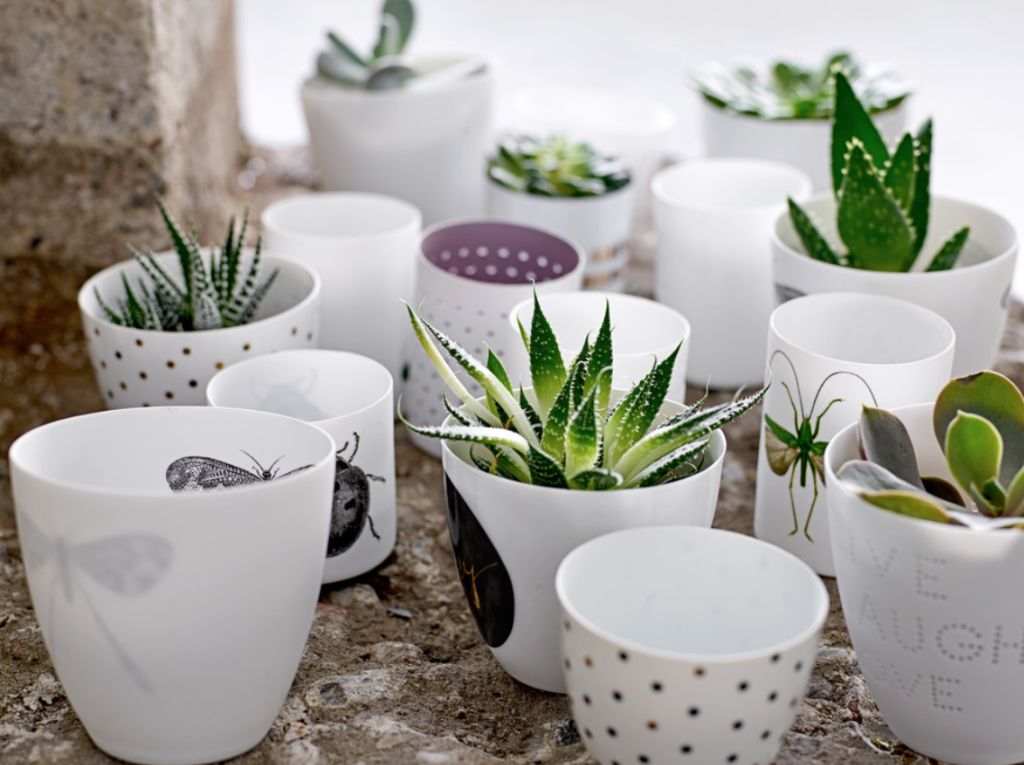Green heart, brown thumb: The easiest indoor plants to take care of

Author: Janet Dunn on Houzz
It’s all too easy to browse a plant nursery and load up with abundant, sprightly potted greenery to freshen your home. Fast forward a month or two – are your new green friends looking a bit disgruntled? You may have splashed out on plants that look great but require diligence to keep them perky and healthy.
If you’re ready to face the fact that your lifestyle and inclinations don’t suit such intense ongoing care, choose from this lineup of plants that will survive some neglect, yet reward you with resilient and thriving growth.
Green heart, brown thumb
Inviting nature into our homes is a flourishing trend. In choosing “Greenery” as 2017’s Colour of the Year, the people at Pantone see this leafy vegetal shade as “satisfying our growing desire to rejuvenate and revitalise”. There’s no denying the calming effect of indoor greenery quietly getting on with the job of making leaves and flowers, and reminding us that slow and steady is a strategy worth adopting.
Stop telling yourself you’re a plant killer and give yourself a fighting chance of joining the growing brigade of house plant lovers by choosing the right green stuff. Start with these forgiving specimens.

Moth Orchid
Botanical name: Phalaenopsis
This popular orchid with its butterfly-like winged petals is not as delicate as it appears. I’ve had three beautiful years out of a supermarket specimen, with little attention. Keep those gorgeous blooms coming by pruning when flowers drop and no more buds are visible. Snip stems, leaving two nodes below the cut, repot in orchid mix and feed with orchid food once a year. It should flower again – be patient.
Prefers: Moderate light, but not direct sunlight; a light bathroom where it can enjoy a little steam bath when you shower, or an occasional spritz of water.
Hates: Over-watering and wet feet. A small drink every 7-10 days is plenty. Place container on a bed of pebbles to drain off excess.

Jade Plant (a.k.a. Money Plant)
Botanical name: Crassula ovata
The jade plant has amazing longevity, sometimes outlasting its original owner. With its pretty, bright green glossy leaves, it really shines in a group of small potted plants with contrasting colours and leaf forms.
Prefers: A well-ventilated spot. It’s tough enough to withstand either lots of natural sunlight or a darker spot, even artificial light, and is content to stay in the same pot and soil for years.
Hates: Getting cold and unnecessary watering. Water only when thoroughly dry and keep barely moist in winter.
Caution: Keep kids and animals away from this plant; the sap is poisonous if ingested.
If your jade plant stays with you for several years – and there’s a good chance it will – it will grow more tree-like, like this gnarly stoic example above. As it will be with you for a while, splash out on a pot that enhances its striking shape and textures.

Aloe Vera
Botanical name: Aloe barbadensis
Aloe, aloe – welcome these spiky wonders into your home for more than one reason. They are living first aid kits – keep one in the kitchen to salve burns and scrapes. Simply snap off a small length of leaf and squeeze the pure gel onto the wound. You can also add the gel to healthy drinks.
Prefers: Sandy soil. Allow soil to dry between deep waterings and repot only when roots appear from the bottom of the pot.
Hates: Premature repotting. Harsh light, high humidity – like most succulents, they’d rather not live in the bathroom.

Mother-in-Law’s Tongue (a.k.a. Snake Plant)
Botanical name: Sansevieria trifasciata
Meet the Bear Grylls of the plant world; resilient, infallible and attractive. This boldly upright succulent is dramatic in a modern setting, forming a living sculpture. Its rich green lemon-striped vertical leaves emphasise room height, enhance timber tones and improve air quality.
Prefers: Moderately bright light conditions, tending towards low light with occasional dappled sun. Dryish warm air, light peaty soil and an occasional wipe of its leaves to keep their pores clean. Err on the side of less water to avoid root rot.
Hates: Being drowned and having water poured directly onto its leaf rosettes – water the soil only.
Note: It’s better potted indoors than in the garden. It has a weedy reputation and can spread vigorously, crowding out other growth.

Peace Lily
Botanical name: Spathiphyllum
The peace lily is a survivor, producing much of its own food and sending forth creamy spoon-shaped candle-like flowers when it feels the urge. It’s lovely in the bedroom, where it is said to purify the air, and has a serenity that suits a quiet retreat.
Prefers: A low-sunlight spot and a pot large enough for it to produce its abundant glossy foliage. Ensure soil stays moist but not soggy – investigate a self-watering device if you are going to be away for a while. Clip old leaves from the base to encourage growth.
Hates: Extremes of temperature.
Caution: Although it’s unlikely that a dog or person will chew on your peace lily, be aware the leaves are poisonous and the sap is an irritant.

Boston Fern
Botanical name: Nephrolepis exaltata
A favourite of every mid-century hallway and Victorian era parlour, this is a fern’s fern, quite happy in modern decor. Hang it high, let its elegant arching fronds droop on a stylish plant stand or create a formal arrangement with a pigeon pair flanking a special furniture piece. It’s one of the hardier ferns.
Prefers: Indirect filtered light and high humidity, around 50 per cent, which makes the bathroom an ideal spot. Keep soil moist but not soggy.
Hates: Dry air, saturated soil. An unhappy fern may sulk and die off, but can be brought back from near death by adjusting its environment.
Tip: Under no circumstances fall for a maidenhair fern. They are needy and temperamental and have a high mortality rate in the hands of amateurs.

Lucky Bamboo
Botanical name: Dracaena sanderiana
An almost foolproof plant, this is not a bamboo but a dracaena that thrives indoors. It’s the Esther Williams of house plants, a water baby that doesn’t need soil to grow. Many come from China twisted into fantastic spirals.
Prefers: Indirect average to low light. It’s sensitive to chemicals, so treat it to a few centimetres of filtered water in a tall glass container with a layer of pebbles in the base. Change water once a week and add a drop of liquid fertiliser once a month.
Hates: Direct sunlight. Dirty water.

Devil’s Ivy
Botanical name: Epipremnum aureum
There’s nothing devilish about this graceful low-care climber, except its toxicity to animals and little kids and its invasiveness if planted outside. Its charm is in its arrowhead-shaped leaves, sometimes with delicate gold striations.
Prefers: Partial all-year-round shade and an occasional water spritz. It really can’t be under-watered, so step away with the watering can unless it’s quite dry.
Hates: Draughts, cold.
Showcase your ivy on a tall plant stand, as it will soon reach the ground. You can trim off any errant fronds with impunity – this is one tough plant.
We recommend
States
Capital Cities
Capital Cities - Rentals
Popular Areas
Allhomes
More
- © 2025, CoStar Group Inc.







